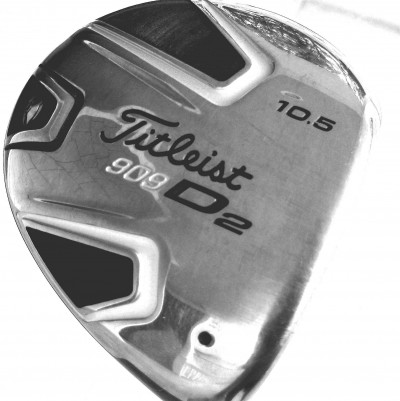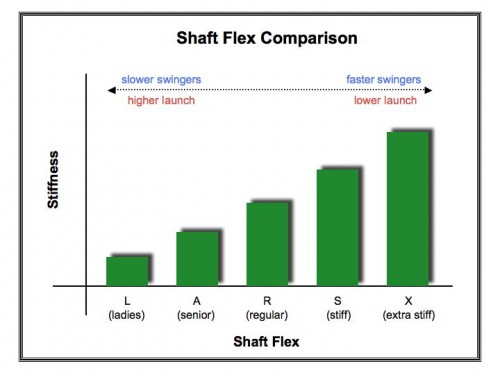Basic Factors to Consider
Is your driver more than three years old? If so, golf club manufacturers would say it’s time for a new one. I was skeptical too, but when I finally bit the bullet and bought a modern driver, I couldn’t believe the difference (and my old driver was only five years old). If you’re serious about your game, it’s well worth the investment.
Finding the right driver isn’t hard. Contrary to popular opinion, you don’t need to pay anyone to tell you what you should be swinging. You can do it yourself — you just need to know what to look for. We’ll spend this post discussing the four simple factors to consider when buying a driver, and then next time we’ll talk about how to get it done.
 1. Loft
1. Loft
The higher the loft on your driver, the higher the launch angle and the more backspin. For players who have faster swing speeds (generally better players), too much loft can be detrimental. More loft creates more spin and more height, and this leads to high ballooning shots that get caught in the wind and don’t go anywhere. On the other hand, for those with slower swing speeds, higher loft will help get the ball started on a higher trajectory, and this will increase carry distance.
Most manufacturers sell drivers with lofts ranging from 8 degrees to 12 degrees. To check the loft on a driver, look at the bottom of the club (see left).
2. Shaft Flex
Shaft flex refers to the whippiness, or bendiness, of the shaft. A more flexible shaft tends to create more whip, which leads to an increase in launch angle. Again, this can be good for slower swingers who need some help getting the ball up in the air. On the other hand, a whippy shaft in the hands of a faster swinger would lead to high floaters. To get a more penetrating ball flight and greater distance, faster swingers tend to prefer a stiffer shaft. The flex of the shaft will also have an impact on accuracy, so it’s important to get this right.
The flex of the shaft is generally marked with a single letter on the shaft itself (see below). There are five common flexes available, listed here in order starting with the stiffest: “X” for extra stiff, “S” for stiff, “R” for regular, “A” for senior, and “L” for ladies’, or women’s, flex. (Note that “men’s” and “women’s” are just labels – many women play “men’s” shafts.)

3. Length
When it comes to the driver, there’s always a tension between distance and control. All other things being equal, a longer club leads to more distance. It’s important to note, however, that a longer driver is much more difficult to control. Club manufacturers know this, of course, but in an effort to make you think you can hit it as long as John Daly, they continue to churn out drivers that are way too long for the average player. In the end, a longer driver in the hands of an average golfer leads to more mishits and, paradoxically, shorter drives.
These days, 45 inches is standard length for a men’s driver. Some manufacturers are pushing 46-inch drivers. For reference, most tour players play drivers that are 44 or 44.5 inches long. At one point, Tiger was even playing a driver that was in the 43 to 43.5-inch range. Again, chances are you’ll make more consistent contact with a shorter shaft, and this will lead to longer drives.
4. Aesthetics
Part of buying the right driver is choosing a clubhead that fits your eye. When we talk about the head of the club, we’re really talking about the model and brand of the clubhead. Almost all new driver heads are 460 cubic centimeters in size (which is what you want for maximum forgiveness and distance), and most of the major brands make quality heads. So, choosing a clubhead really comes down to aesthetic preference – you want it to look right, feel right, and sound right when you hit it. These “aesthetics” factor into the confidence level that you’ll have with the club, and we all know how important confidence is. If the look of the club behind the ball inspires visions of low snap-hooks into the forest, put it back. Don’t even swing it. Wait until you find the one that looks so good you can’t live without it. Before you buy your driver, love the way it looks.
Okay. Those are the four factors to consider. Next time, we’ll talk about how to use these factors to find the perfect club … all without spending a penny to get fit.
